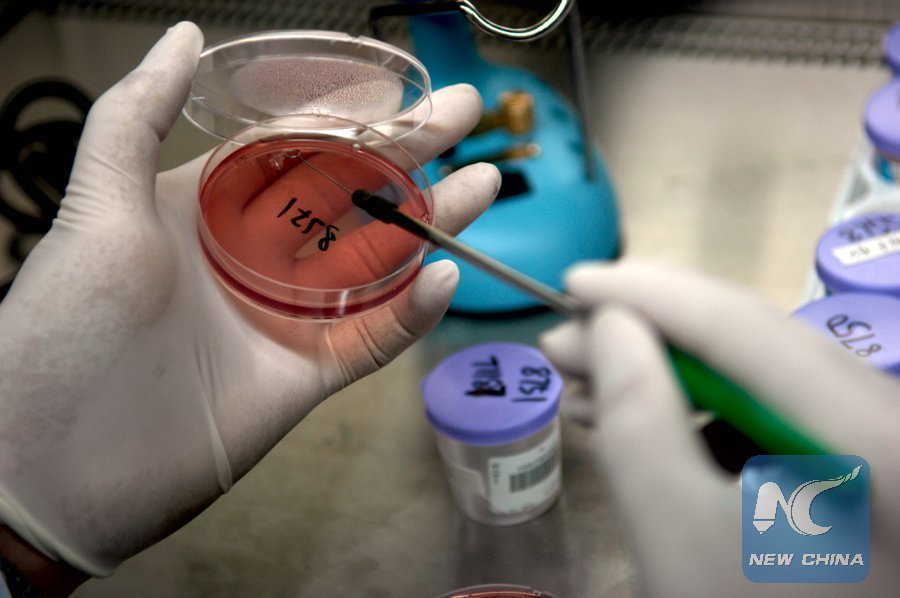
A staff member tests samples at a lab in Jinan Central Hospital, east China's Shandong Province, on Oct. 29, 2010. The hospital was among the 19 hospitals nationwide that moniter superbug. (Xinhua/Guo Xulei)
WASHINGTON, July 11 (Xinhua) -- Bacteria carrying the MCR-1 "superbug" gene, which makes the last-resort antibiotic colistin useless against them, have been found in a second U.S. patient, researchers said Monday.
The gene was detected in an isolate of Escherichia coli that was originally recovered in 2015 from a patient in New York, according to the research published in Antimicrobial Agents and Chemotherapy, a journal of the American Society for Microbiology.
Previously, Escherichia coli bacteria carrying the MCR-1 gene was identified in a urine sample from a Pennsylvania woman with no recent travel outside of the U.S. this May.
The mcr-1 gene makes bacteria resistant to the antibiotic colistin, which is used as a last-resort drug to treat patients with multi-drug-resistant infections, including carbapenem-resistant Enterobacteriaceae (CRE).
U.S. health experts said the discoveries would be concerning because the mcr-1 gene exists on a plasmid, a small piece of DNA that is capable of jumping between different bacterial species, spreading any resistance genes it carries.
In the current study, the researchers, who coordinated the worldwide SENTRY Antimicrobial Surveillance Program, first tested 13,526 Escherichia coli and 7,480 Klebsiella pneumoniae strains that had been collected from hospitals in the Asia-Pacific region, Latin America, Europe, and North America in 2015.
They found that 390, or 1.9 percent, were resistant to colistin, and that 19 of these isolates tested positive for mcr-1.
The 19 isolates originated in ten countries representing all of the above regions. It involved a New York patient infected with Escherichia coli whose name was not disclosed.
The isolates that tested positive for mcr-1 were susceptible to several commonly used antimicrobial agents, including carbapenems, and recently approved anti-microbial agents that can be used against gram negative bacteria, said corresponding author Mariana Castanheira, Director for Molecular and Microbiology at Iowa-based JMI Laboratories.
That means these and similar isolates are unlikely to cause hard to treat infections at this time, Castanheira noted.
The presence of the mcr-1 gene, however, and its ability to share its colistin resistance with other bacteria such as CRE raised the risk that pan-resistant bacteria could develop, the U.S. Centers for Disease Control and Prevention said earlier.
The mcr-1 gene was first isolated from food animals and humans in China in late 2015. Following that, scientists across the globe began searching for other bacteria containing the mcr-1 gene, and the bacteria have since been discovered in Europe and Canada.

